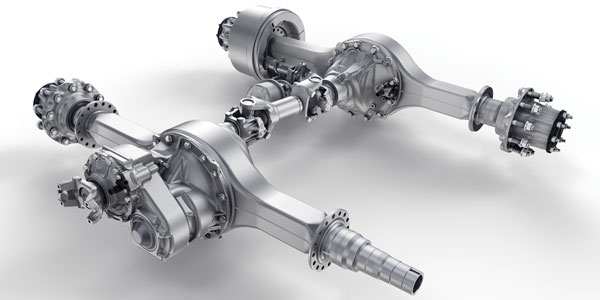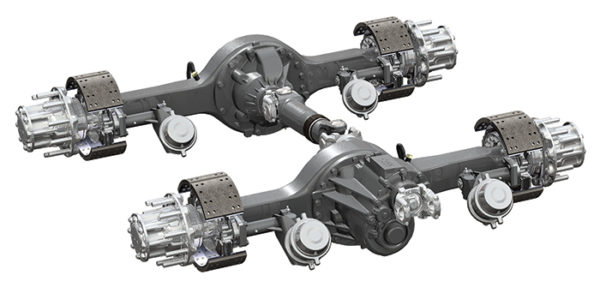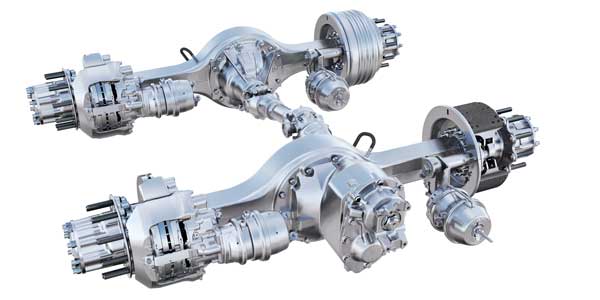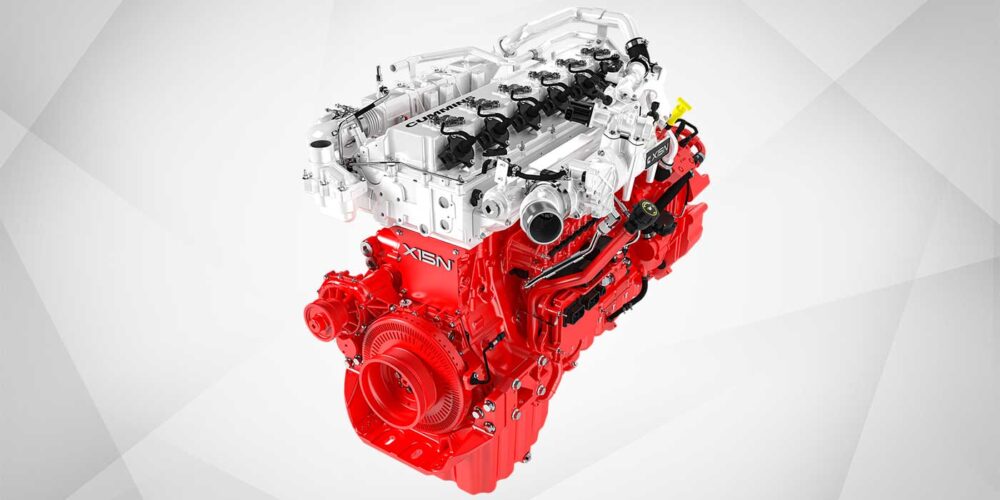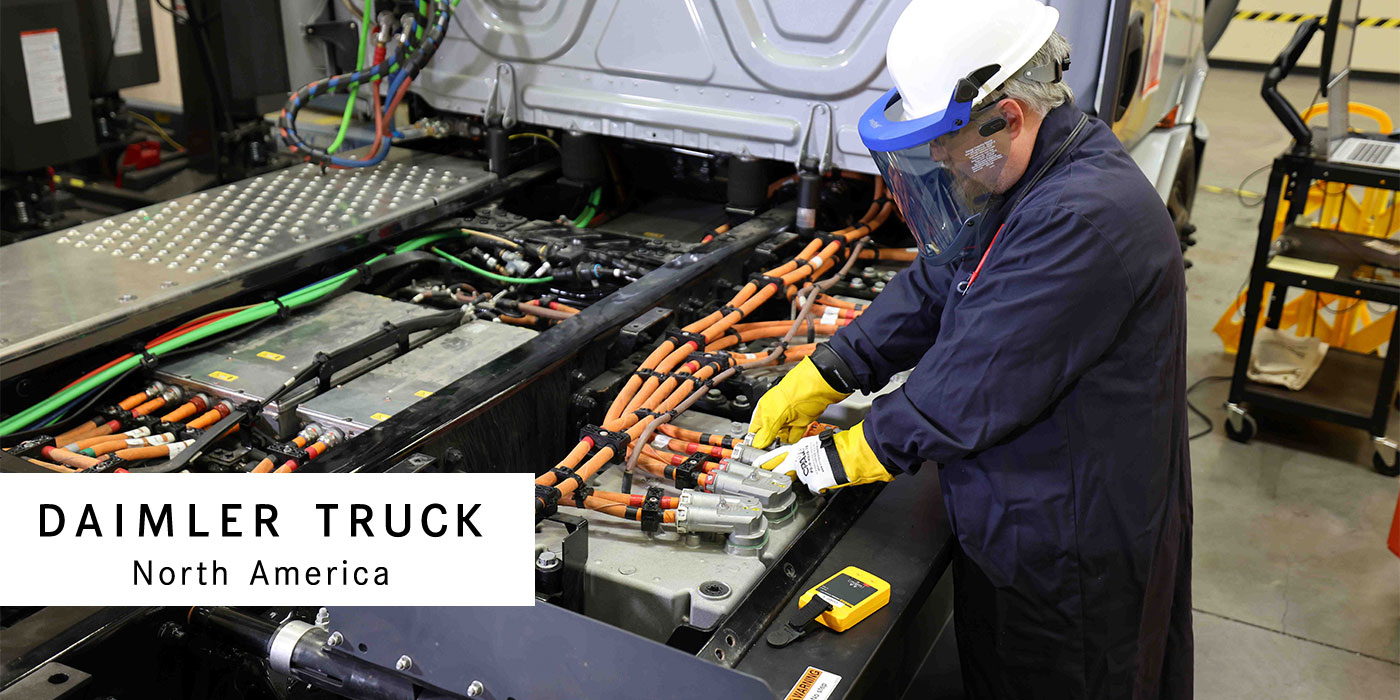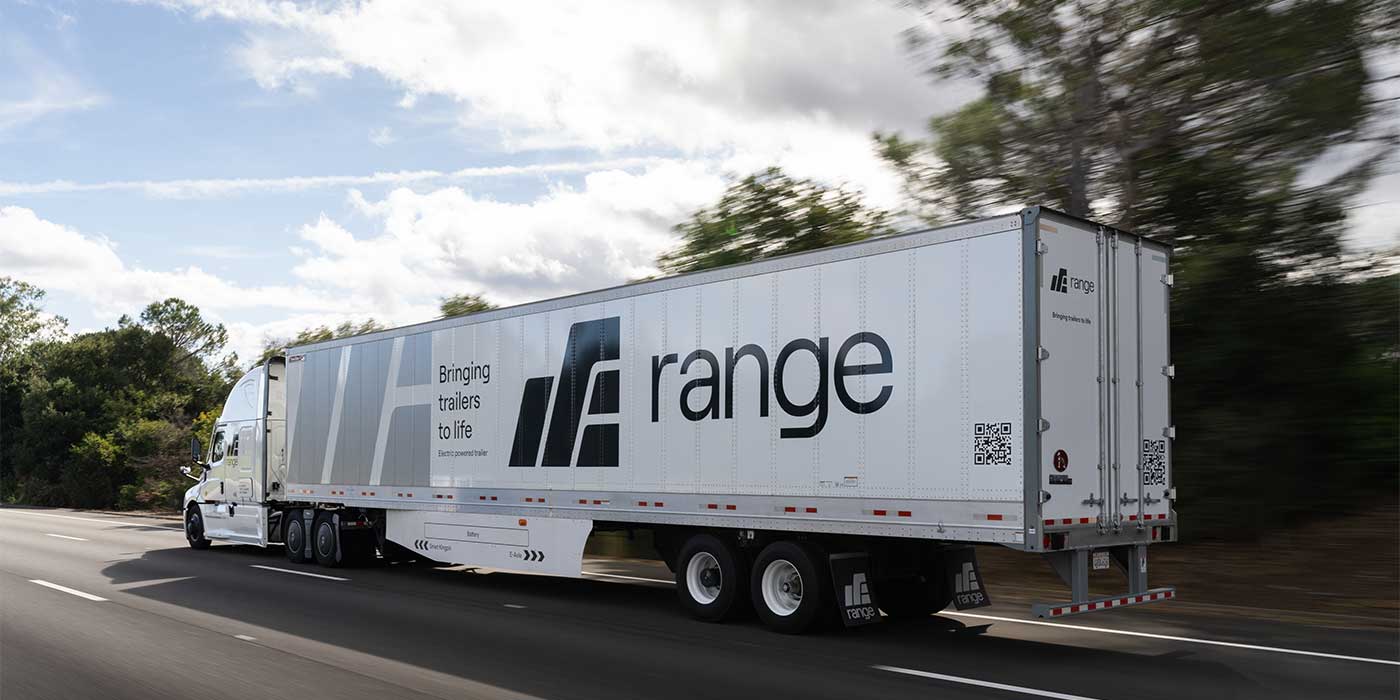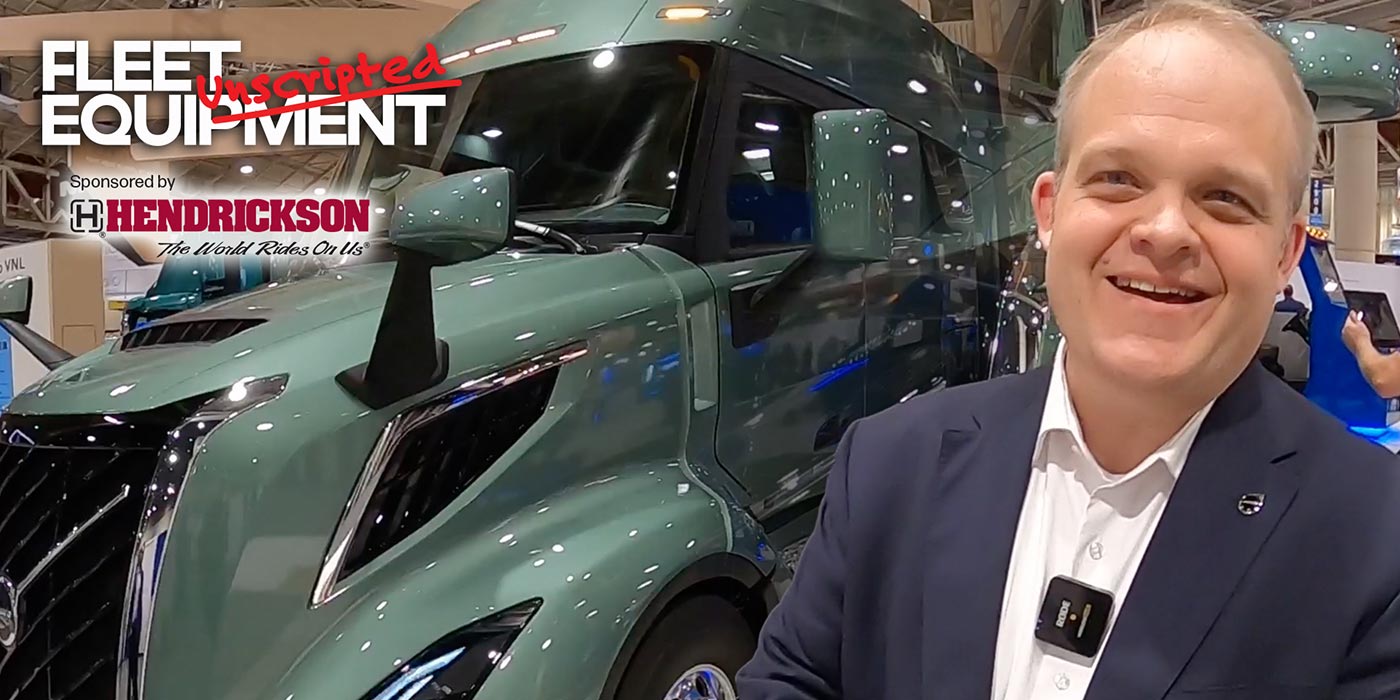Application is key when spec’ing your truck’s components, and that goes for parts as big as the engine to those as small as wheel bearings. For now, let’s start at the beginning of the alphabet and talk about how application should affect your axle choice.
First things first: The axle, of course, works very closely with the engine and the transmission, and the three should be spec’d with the entire powertrain in mind. This could mean going for a “fully integrated powertrain,” which means that the components are integrated at a deeper level than typical specs. Many OEMs and suppliers offer a fully integrated solution. Or, it could mean making sure that your three hand-picked components integrate well with each other to work toward a common goal—whether that’s hauling goods on long-haul, on-highway routes, urban pickup-and-delivery routes, or anything in between. The axle-spec’ing question is: Do you place higher value on durability, weight savings, fuel efficiency or performance?
“Selecting an axle and specifically the axle ratio is less about the axle and more about the entire powertrain as a system,” said Brian Daniels, manager of Detroit powertrain and component product marketing. “Transmission type [automated manual vs. manual vs. automatic, overdrive vs. direct drive, etc.] can heavily influence the choice of an axle ratio.
“When selecting an optimal axle, consider the duty cycle that the vehicle will operate in as well as what the weight rating of the vehicle will be,” Daniels recommended. “Each application and duty cycle is unique. For instance, short haul tends to be 4×2 day cabs versus 6×4 sleepers for long haul. Short haul tends to run overdrive transmissions and therefore a lower ratio vs. more fuel efficient direct drive transmissions with a higher ratio for long haul.”
Steve Slesinski, director of global product planning for Dana, agreed that duty cycles are a key ingredient in the axle-spec’ing process, and pointed out that the axle and ratio should match the truck’s performance requirements for the intended application.
“For diminishing-load applications,” he elaborated, “a fleet may want to spec a smaller lighter-weight axle to save on initial investment. The lightest weight configuration will also allow for increased load capacity. But if a lighter axle is significantly overloaded or abused, it may result in early repair bills. If over-specified, a fleet may be spending more than necessary and hauling extra weight.”
Slesinski also singled out operating environment as an important factor in choosing an axle, noting that fleets should consider anticipated terrain, grades and speed. “A 6×4 axle configuration with a differential-lock option can provide the added traction needed in inclement weather or on steep grades, while 6×2 drive axles are best for primarily dry-weather conditions over flat, smooth pavement when torque on all four wheel-ends is not as critical,” he added.
“Durability and reliability can impact the entire powertrain from an incorrect ratio spec’d in the wrong application. This impact can be felt from the clutch to the axle,” pointed out Dawn Clegg, director of product line management for rear axles for North America with Meritor. “For example, a direct drive with super-fast ratio specified in a city delivery application will result in torque levels well beyond the design life on components and could result in decreased life.
“Also, given the increased torque on the driveshaft due to faster ratios, larger series drive shafts have been designed to handle higher torque coming from the engine in a downsped application. Upsized components include u-joints and other connecting components. This redesign enables u-joint life of 1 million-plus miles,” she added.
Clegg also noted that Meritor has been incorporating the use of flanges between the transmission, driveline and axle. This practice, she explained, is common in Europe and other areas as flanges create a stronger interface and a smaller package than the size needed of a traditional end yoke.
There are also resale value considerations in play. “While 6×2 configurations can add time to the resale process at a lower selling price, if a fleet is weight-sensitive, they shouldn’t change their original spec over the viability of resale,” Dana’s Slesinski said. “As 6x2s gain further acceptance and the products continue to develop, the resale issue will likely diminish.”
The downspeeding trend
Downspeeding is based on axle ratios, with lower ratios (represented by higher numbers, like 4.30) providing more power, and higher ratios (represented by low numbers, like 2.16) offering more speed and requiring less power to keep the truck going. Trucks that spend most of their time on-highway tend to appreciate higher ratios, while those that need power and torque will want to stick to lower ratios.
The type of transmission also plays a role in downspeeding with higher ratios (again, lower numbers) being more prevalent on direct drive transmissions, which are suitable for on-highway applications, while overdrive transmissions can utilize downspeeding in applications such as regional-haul and pickup-and-delivery, with lower ratios that provide more power.
“The selection of engine and transmission combinations determines the torque required to deliver an optimum power level,” Dana’s Slesinski said. “Spec’ing the axle and driveshaft system to handle torque loads is important.”
Slesinski went on to say that the tandem axle selected for an engine downspeeding package should incorporate specific innovations to improve performance in a high-torque environment, including:
- More capable primary gear;
- Wider face gearing with longer tooth length for lower contact and bend stress;
- Rigid ring gear mounting that eliminates joint loosening;
- More capable input shaft and pinion splines;
- More capable input and pinion bearings; and
- Faster ratios to match intended operating speeds at reduced engine RPM.
The downspeeding trend is only increasing in popularity, as it becomes more viable thanks to new powertrain designs and capabilities. Meritor’s Clegg noted that in the past five years, Meritor has seen growth in direct drive fast ratios evolve from 9-10% to 30%, and that Meritor sees rising fuel prices and upcoming 2020 GHG regulations leading to even more demand for downspeeding capabilities.
Beyond the basics
We asked our panel of experts if there are any common axle misconceptions they would like to correct, and they jumped at the chance to do so.
Dana’s Slesinski added another wrinkle to the downspeeing question, pointing out that while properly spec’ing the axle ratio for a downsped engine is crucial, it is not the only consideration.
“The other important aspect of a driveline solution for engine downspeeding is a driveshaft and inter-axle shaft engineered to maximize the efficiency and durability of the tandem axle while offering reduced noise and vibration at lower engine operating RPM to keep drivers happy and vehicles productively operating,” he said.
The driveshaft, Slesinski continued, should be engineered to manage the higher torque stresses associated with engine downspeeding, including: larger diameter U-joint cross engineered for high strength; larger bearings with greater capacity; and a high-density package to fit within existing design envelope. Slesinski pointed to the Spicer SPL 350 driveshaft and SPL 250 inter-axle shaft, which he said have been developed to supply a million miles of life expectancy in a downsped engine powertrain.
Meritor’s Clegg said that the drive axle is an “often overlooked” component in the powertrain. “What many do not recognize,” she elaborated, “is that the drive axle ratio sets the vehicle road speed and fine-tunes the powertrain performance. The drive axle assembly is an important structural element of the chassis. The axle housing supports the vehicle ground load and is the foundation for the multitude of suspension systems available in the industry. This includes suspension elements that are bolted or welded to the axle housing. Many of the air suspensions available today use the drive axle housing a torsional element of the suspension system forcing the axle housing to be a highly engineered component that must contend with the multi-axes loads seen in everyday use.
“The drive axle housing also serves as a mounting point for the industry standard wheel hubs and must meet stringent standards and the demands placed on the housing spindle through the wheel hub loading,” she continued. “Lastly, the drive axle housing acts a mounting point for the foundation brake components and must be capable of withstanding the brake torque loads associated with the reduced stopping distance brake systems and the air disc brake.”
Detroit’s Daniels, meanwhile, pointed to advancements in axle lubrication technology, which he said is paying dividends both in fuel efficiency and in extending maintenance intervals. Daniels touted Detroit’s Axle Lubrication Management system, which he says contributes up to 1.6% fuel efficiency gain in new Detroit Model 4 axles compared to their predecessors.
Speaking of lubrication, Clegg said that Meritor has noticed a trend toward lower viscosity lube, which results in less friction and increased axle efficiency. This reduction in lube viscosity, she said, can equate to a 0.3 to 0.5% improvement in overall axle efficiency.

